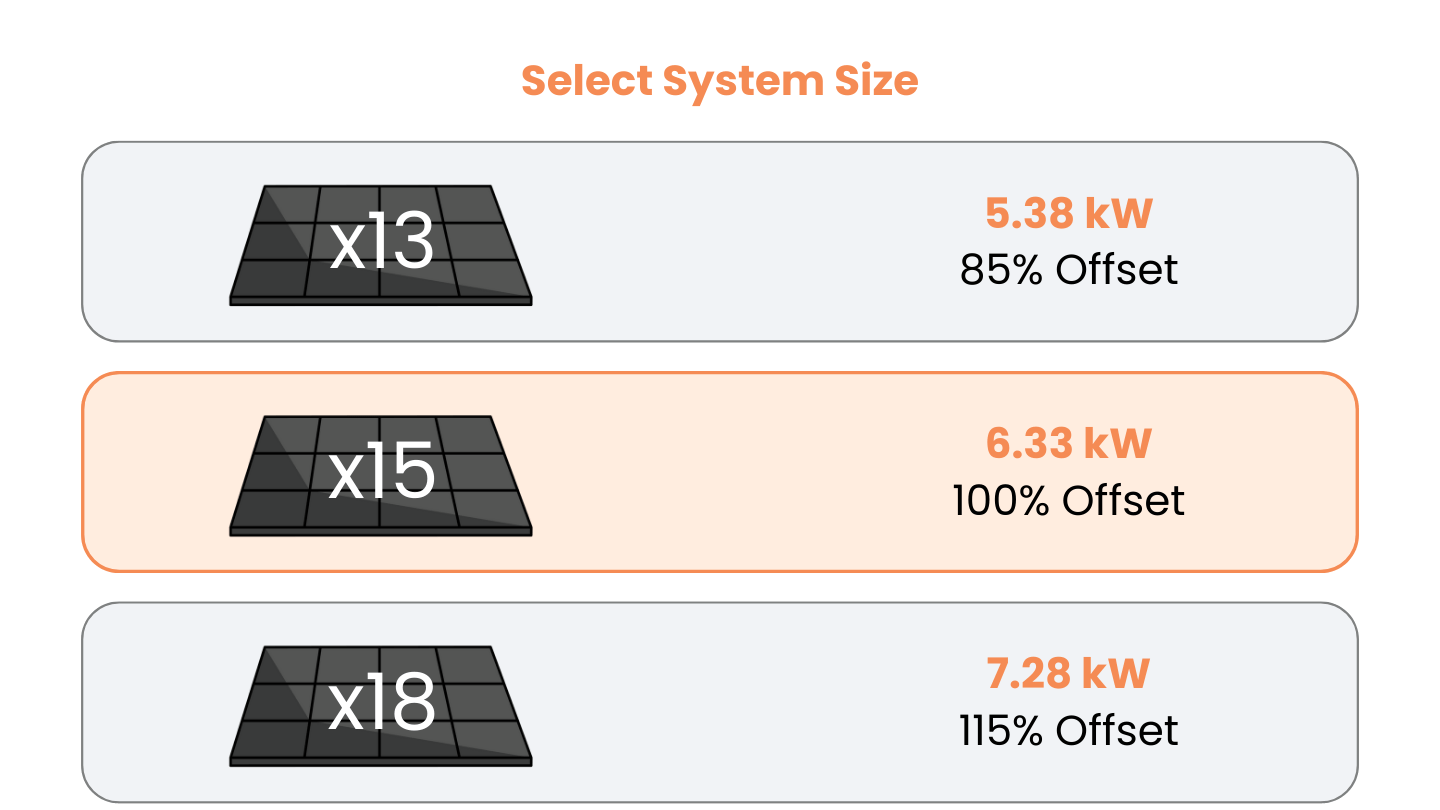WHAT TO KNOW
Cost of Solar

Key Factors To Compare

System Size
This metric holds more significance than the sheer number of panels. Variations in panel efficiency can affect system size, with more panels not necessarily equating to better efficiency.
Cost Per Watt
This metric reflects the price paid relative to the system size received. Even if an overall quote seems cheaper, a higher cost per watt could imply less of a deal. It's crucial to compare prices on a uniform basis to make informed decisions.
Equipment/ Warranties
Evaluating both the quality of equipment and accompanying warranties is essential. Opting for superior equipment backed by comprehensive warranties ensures reliability and peace of mind. At Breeze, we uphold these standards as standard practice.
System Sizes & Offset

85% Offset
For 85% offset, you will get the lowest overall price, but the system will likely not meet your full energy needs and you will continue to receive a monthly utility bill, though it will be much lower.
100% Offset
For 100% offset, this system should completely offset your current energy usage, reducing your utility bill almost entirely. You will likely still have a small charge to remain connected to the utility grid. Connection fees vary depending on your utility company.
115% Offset
For 115% offset, this system is perfect for homeowners who know they will be increasing their usage in future, such as buying an electric vehicle (EV), a heat pump, or other high usage household appliances.
Factors Impacting Solar Panel Costs

Location
Before considering the specific details of each individual home, our solar experts will consider your geographic location, climate, average temperature, and house orientation and how it will impact the customized solar installation and production.
Utility Needs and System Size
You will most likely want your system to completely offset your utility costs. These needs are taken into consideration and depending on the size of the home and your monthly utility cost, more panels may need to be added to offset costs at the desired amount.
There are also requirements about roofing – material and angle, primarily. Array designers will need to ensure the panels can be placed at an ideal angle, usually about 45 degrees.
Net Metering
When a homeowner produces their own electricity through solar generation, any excess electricity they produce is sent back to the grid. Most utility companies will reward their customers for this production through energy credits that can be used to offset later bills. Regulations for rates and amounts differ per state and area, so contact your local utility company to learn more.
How Can I Pay For My Solar Panels?
From cash deals to short-term and long-term financing, we have it all because we know everyone’s situation is different. We want every customer to know that when they go solar with Breeze, they are getting the best deal out there!

Cash
With a cash payment, homeowners can buy their solar panel system outright. This is a great option for homeowners who have the ability, and results in the largest savings.
Solar Loans
With different financing options available, Breeze Solar customers can secure fixed monthly payments for their solar panel system(s).
Federal Investment Tax Credit (ITC)
The federal Investment Tax Credit (ITC) is a non-refundable, dollar-for-dollar reduction and one of the biggest incentives to going solar. Homeowners who qualify can receive a credit on their federal income taxes for 30% of the cost of their system including batteries to make it more affordable.
Potential State and Local Incentives and Rebates
At Breeze, we take pride in offering competitive pricing without compromising on equipment, quality or service. We believe in transparency, which is why we provide our pricing upfront, without any obligation to commit to solar. While pricing varies by state, our typical price range falls between $1.75 to $2.00 per watt after factoring in tax incentives.
Solar Panel Types and Average Costs
The best panel option for residential solar is monocrystalline. These can be more expensive than polycrystalline panels but are more efficient and work better in smaller spaces. Read more about panel types here.
